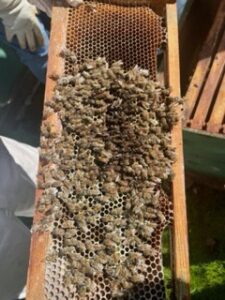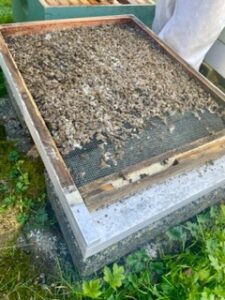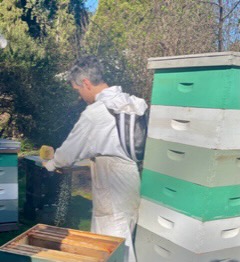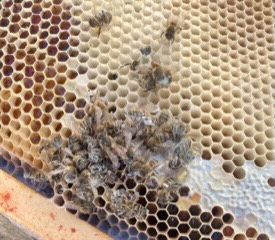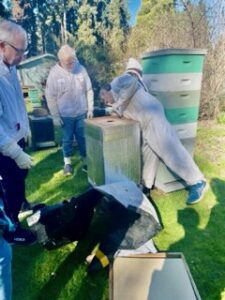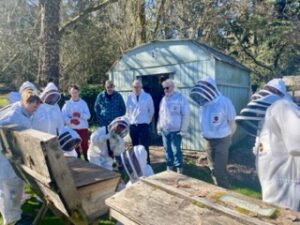Why did my Bees die this winter?
Thank you to all who came out on Saturday for Hive Forensics at the Apiary. It was a beautiful sunny day and it seemed that all of Seattle was out, which made traffic and parking challenging. A big thank you to Jeff Steenbergen for providing a thorough and informative day at the Apiary. I know I was anxious to get home and go through my own hives while all his lessons were still fresh in my mind.
Observations from Saturday:
The nectar dried up mid-summer and there was no fall flow. This left the bees unable to backfill in preparation for winter.
Recommendation: Feeding should start in early August, emphasizing the importance of timely intervention. Hives that are not up to winter weight should be fed to give them enough time to dry and cap for winter stores. Moisture boards need a vented gap above to keep them from becoming soggy sponges.
Dead Wet Bees
Many Dead Bees
Hive location # 9 (Hive that was donated late summer)
This hive faced several challenges, including watery fermented nectar, a small cluster, and a large mite infestation. Despite plenty of honey left behind, poor frame arrangement proved fatal, as new frames were optimistically placed above the brood area and the bees didn’t have sufficient resources to draw them out or store food in them. When the tiny cluster tried to move up there was no food for them to find there. Conclusion: They most likely died from Varroa and associated diseases. Recommendation: Condense down hives for winter. Don’t leave the bees with partially drawn boxes.
Shaking out fermented nectar
Hive location #5
We discovered a small cluster in the second box, it appeared as though they struggled to move up due to the placement of oxalic sponges directly above them. Conclusion: Starvation. Recommendation: Remove oxalic sponges before winter.
Dead Cluster
Hive location #4
We found a good-sized cluster that moved upward along one side of the hive and ran into the inner cover without a warm weather opportunity to break cluster to reach the reserve food on TOP of the Inner Cover. There was no honey anywhere in this hive. Conclusion: Starvation. Recommendation: Mountain camp feeding on newspaper directly over the frames would have prevented this outcome.
Unwrapping a hive
Top bar Hive
Mites plagued this hive, exacerbated by insufficient oxalic strips and potential robbing. We didn’t see any honey left.
Recommendation: There should only ever be 1 of the 3″ entrances open in these top bars unless you are running a double colony.
Live Hive location #7
We inspected one of the three surviving hives and found it with a queen, brood, and approximately 1-2 pounds of bees. We made the following adjustments: Placing the two frames of brood in the middle of the box and adding honey to either side of brood then frames with pollen and finally honey along the edges. We took honey from the donated hive and placed it in the second box with the two middle frames directly above the brood frames with nice honey arches and room for brood. We also noticed that the weather wrap was acting as a pollen trap causing most of the pollen to fall on the ground.
Note: Alternatively, we could have condensed this hive down to a nuc.
